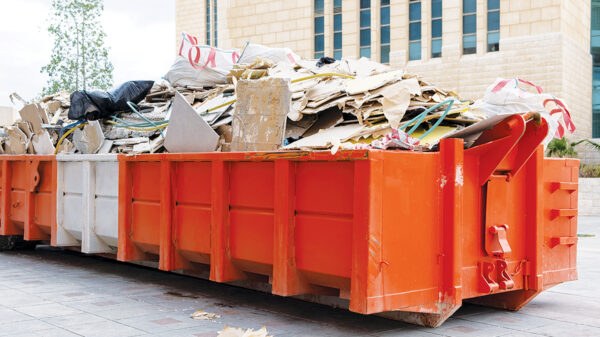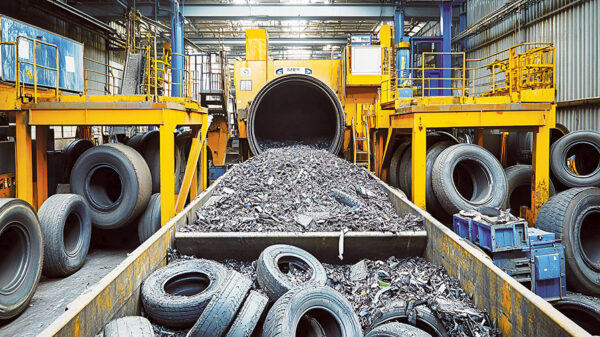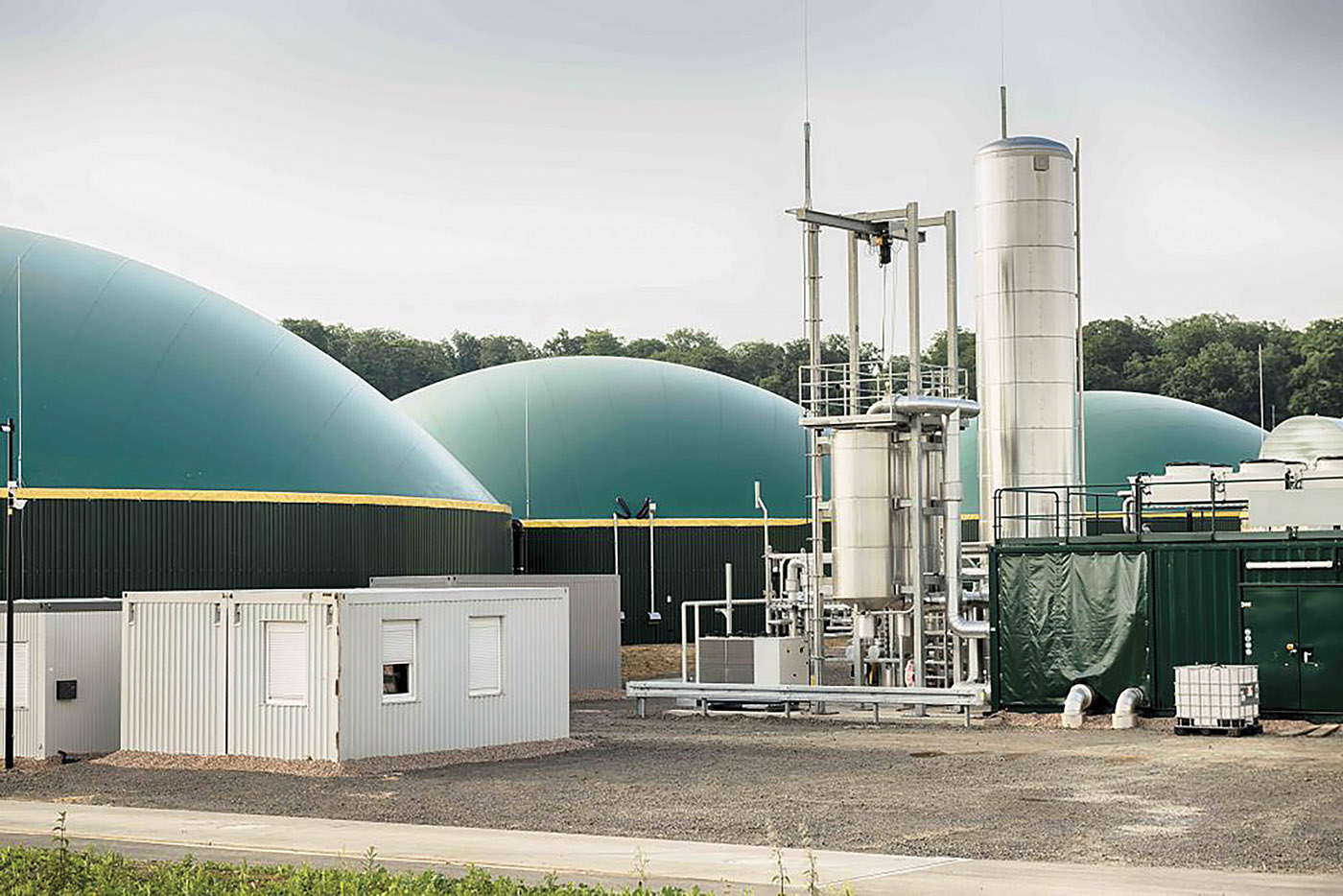In a recent study by Straits Research, the global waste-to-energy (WTE) market was $37.1 billion in 2022 and is expected to reach an estimated value of $68.78 billion by 2031. This level of growth is indicative of how the waste and recycling industry has embraced WTE plants in an effort to lessen the burden on today’s landfills and properly handle the disposal of waste. But WTE initiatives also face a myriad of challenges that could potentially impact this predicted growth.
Matthew Pierson, project developer at Babcock & Wilcox (B&W), said that while existing WTE plants continue strong operations and a solid backlog of parts and service work remains, the new-build WTE market in the U.S. has cooled over the past several years.
“For example, the most recent commercial WTE project in the U.S. commenced in 2015 –Babcock & Wilcox provided the boilers and flue gas treatment (FGT) train for the Palm Beach Renewable Energy Facility (PB REF) expansion project in Florida,” Pierson said. “Over the past 18 to 24 months we have seen an uptick in early-stage development activity for WTE projects, which is an encouraging signal. We believe WTE will continue to be employed as part of the waste management solution in the U.S. as we transition to a cleaner, greener energy production future and look forward to seeing several of these development opportunities converted to successful projects.”
Pierson explained that two of the biggest influences opposing the WTE industry are the amount of low-cost landfill space in the U.S. and the misperception that WTE plants are unclean.
“When developing a new-build WTE plant, especially when debt financed, building a proforma with an acceptable return on investment can be a challenge,” Pierson said. “One of the major income streams for a WTE plant is the tipping fee, and when the market drives the tipping fee down by offering very low-cost landfill disposal, project economics can be less favorable. This is where developers must remain strategic in selecting locations and pursue additional revenue streams for their projects.”
Although a significant portion of waste streams that will generally enter a WTE plant tipping floor are biogenic, Pierson said so far none of the recent federal level programs have covered WTE with any renewable energy credits.
“That said, B&W has been developing several technologies for the past decades that can complement either an existing WTE plant or be integrated with a new-build plant to bolster project economics by providing additional revenue streams,” Pierson said. One technology in particular is B&W’s post combustion CO2 capture technology, SolveBright B&W’s SolveBright technology captures the CO2 emitted from the combustion process, yielding an extremely clean flue gas from the plant and a CO2 stream for pipeline transport and beneficial use or sequestration.
“With CO2 capture, WTE projects can take advantage of incentives through investment tax credits, production tax credits, and other revenue streams while at the same time alleviating public perception of flue gas laden with greenhouse gas (GHG) emissions,” Pierson said.
Waste-To-Energy In the Organics Waste Space
In the area of organics waste, Bioenergy Devco chief executive officer Shawn Kreloff further explained, the term “waste-to-energy” is often narrowly associated with the incineration industry. In contrast, converting organics to renewable energy covers a broader spectrum of industries, each having distinct environmental implications.
“Over recent years, organics recycling has experienced significant expansion. However, when it comes to the waste-to-energy realm, particularly incineration, we haven’t seen the construction of any major facilities in recent years,” Kreloff said.
Waste-to-energy is a form of energy recovery through anaerobic digestion. Kreloff stressed that the growth and expansion of commercial scale anaerobic digestion facilities is the path forward for making meaningful impact on mitigating emissions from food waste and landfills.
“Anaerobic digestion is a natural biological process that breaks down organic materials in the absence of oxygen. During anaerobic digestion, microorganisms thrive and feed on organic matter like food waste. As these microorganisms consume the organic material, they produce biogas, which is primarily composed of methane and carbon dioxide,” Kreloff said. “This biogas is captured and utilized as a renewable energy source.”
Meanwhile, as Kreloff explained, the remaining solid residue, digestate, undergoes further treatment to produce a nutrient-rich organic soil amendment. Anaerobic digestion not only effectively treats organic waste, greatly reducing greenhouse gas emissions compared to landfill disposal, but also provides a valuable source of renewable energy, making it a key player in sustainable waste management and decarbonization efforts.
“Anaerobic digestion harnesses the methane produced during the decomposition of organic waste to generate renewable energy. This closed loop process not only reduces methane emissions, but also provides a sustainable source of electricity and heat, contributing to the decarbonization of our energy systems,” Kreloff said. “When deployed at commercial scale, anaerobic digestion can produce and provide clean, renewable energy for homes, vehicles and more.”
The increased attention and concern over climate change is the single biggest factor affecting the waste management and energy industries. Kreloff said that recent focus has shifted towards recycling and mitigating greenhouse gasses through organics recycling.
“Research suggests that inadequate organic waste management leads to the substantial release of emissions such as carbon dioxide and methane into our atmosphere. Organic waste constitutes a substantial portion of municipal waste streams,” Kreloff said. “When discarded in landfills or incinerators, organic waste releases potent greenhouse gasses that contribute to climate change. In addition to its environmental impact, the disposal of organic waste in landfills is an inefficient use of resources. Organics recycling offers a sustainable alternative.”
Waste-To-Energy in the Renewable Natural Gas Segment
According to Chris Psihoules, senior associate who focuses on energy, infrastructure and resources at Norton Rose Fulbright US LLP, considering most of his waste-to-energy projects are in the renewable natural gas (RNG) space, over the last five years, RNG projects in North America have just about doubled.
“With respect to RNG projects, there are two impediments. The first is public perception, specifically with respect to non-government organizations (NGOs),” Psihoules said. “RNG projects are carbon neutral – they capture emissions from waste that would otherwise escape to the atmosphere, process it, and in many cases, send it through gas pipelines for use downstream. The anaerobic digestion technology used during this process is not new, but has recently grown in popularity.”
Psihoules added that public perception of “gas” projects (specifically with respect to many NGOs) remains negative, and he fears that is in large part due to the RNG process being misunderstood.
The second impediment that WTE is facing within the RNG segment is RNG quality specifications.
“In conjunction with the uptick in RNG projects, interstate natural gas pipelines have seen a significant rise in RNG pipelines. Because of this, interstate pipelines have been filing RNG tariffs at Federal Energy Regulatory Commission (FERC) that set forth different gas quality specifications from those required of the conventional natural gas producers,” Psihoules said. “These tariffs have the ability to stifle RNG production if not well thought out. Many of our RNG clients have intervened in these proceedings to make certain that the RNG projects are able to meet the RNG quality specifications being set out by the interstate pipelines.”
Future Projections
The first steps toward a sustainable waste management program should always be reduce, reuse and recycle. As Pierson explained, even when this philosophy is fully embraced across the country, there will always remain significant waste streams that need to be handled. To generate a strong, clean and efficient circular economy that includes WTE, there will be a significant education about how the WTE technology has progressed over the past decades to being some of the cleanest energy producing plants in the world.
“Landfills have environmental concerns, limited lifecycles and, unfortunately, are generally accepted as the norm, but permitting and development of new landfills can be an expensive endeavor,” Pierson said. “WTE plants offer 90 percent reduction in waste volume, and coupled with landfill for ash and non-recyclable, non-combustible material, can extend existing landfill life and be an integrated solution with an eye to the future.”
Psihoules pointed to a recent Wood Mackenzie report that suggests that by 2050, RNG may make up nearly three percent of the North American natural gas market. The currebt RNG level is 0.5 percent.
“With respect to the recycling industry, one of my clients is using plastics conversion technology. This option is a form of pyrolysis, to produce fuels, petrochemicals and feedstocks that can become the building blocks of new plastics, and wax that can go into candles, polishes, food-grade waxes and carboard boxes, among commodities,” Psihoules said.
Kreloff said present incentives like renewables identification numbers (RINs), predominantly favor landfilling.
“Despite the fact that methods like aerobic digestion or composting result in reduced emissions and promote circular systems, they offer fewer incentives. Furthermore, it’s crucial to future-proof the industry. Our existing infrastructure isn’t equipped to handle green hydrogen, hindering potential progress due to the current framework in place,” Kreloff said. “Expect sustained accelerated expansion in organic recycling. Additionally, it’s essential to maintain persistent scrutiny on the incineration and landfill sectors, aiming to guarantee cleaner air, water and soil for our communities.”
As some landfills reach end of life and the waste is too expensive to transport to other area landfills, especially in densely populated areas, the waste and recycling industry will see an increase desire to move toward a WTE solution.
“The recycling industry and WTE will always go hand-in-hand. Many jurisdictions are single bin curbside collection – even with curbside recycling, inevitably recyclables make it to the tipping floor and waste bunker of a WTE plant,” Pierson said. Any non-combustible material will leave the furnace as bottom ash. With metal separation downstream of the bottom ash discharger, including a rotary drum electromagnet and eddy current separator, over 95 percent of the metals that enter the furnace are able to be recovered, which would have otherwise been landfilled.
“Viewing the offset of greenhouse gas that would be emitted while producing the recovered metals, coupled with CO2 capture, WTE plants of the future can be a net negative CO2 emitter,” Pierson said. “It is likely that many of the future WTE plants will be driven to lower stack emissions and potentially include CO2 capture as well.”







